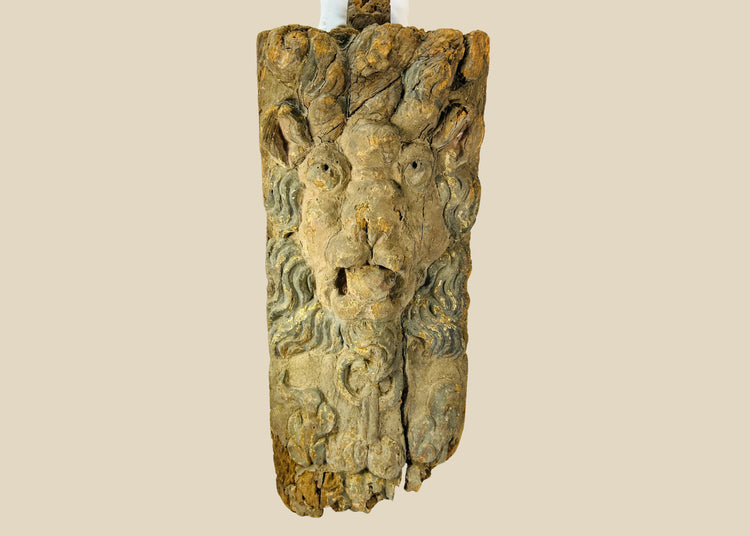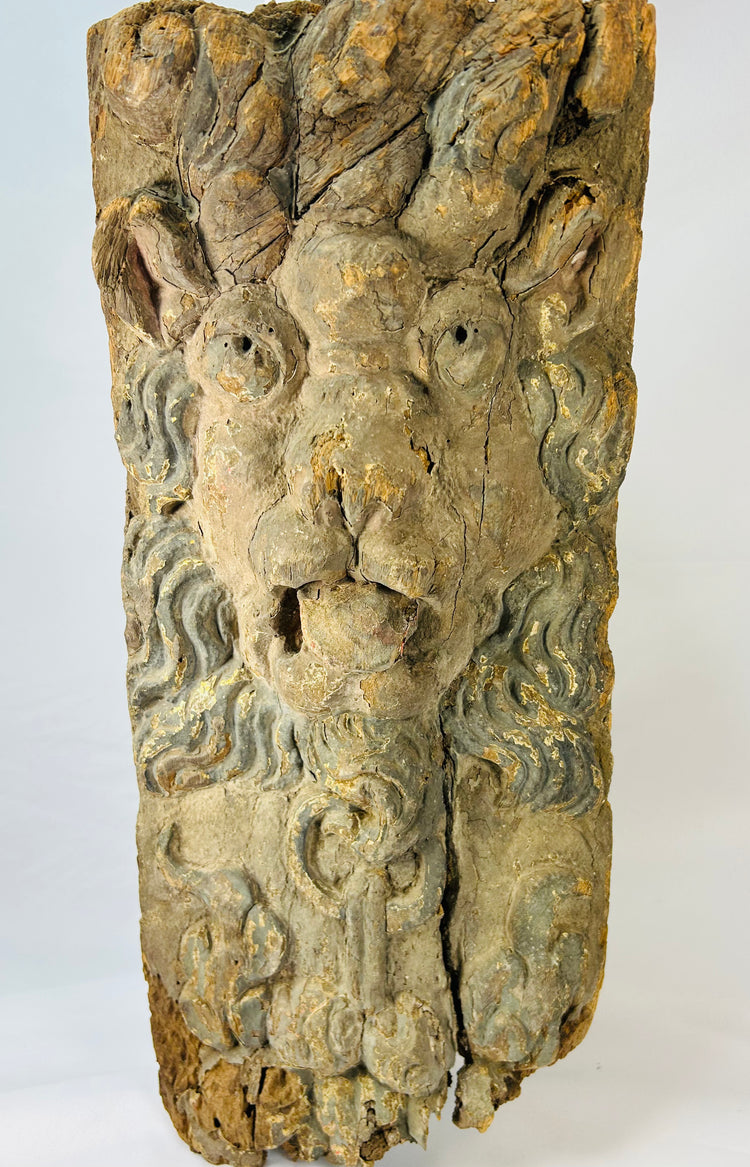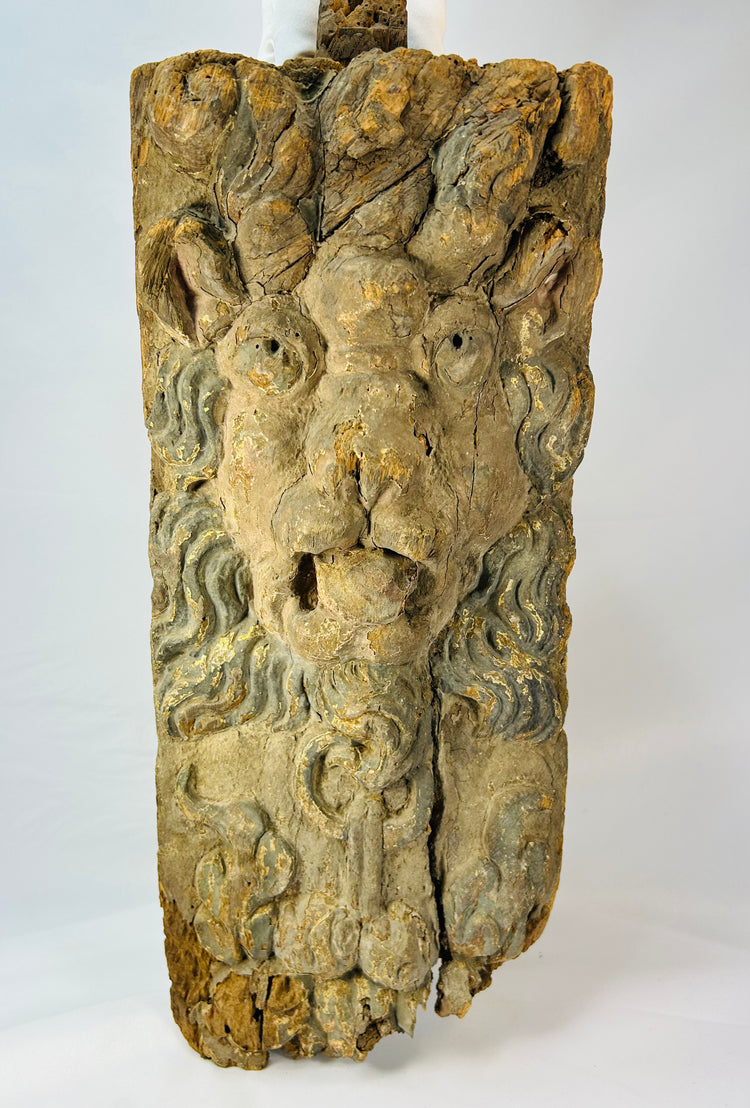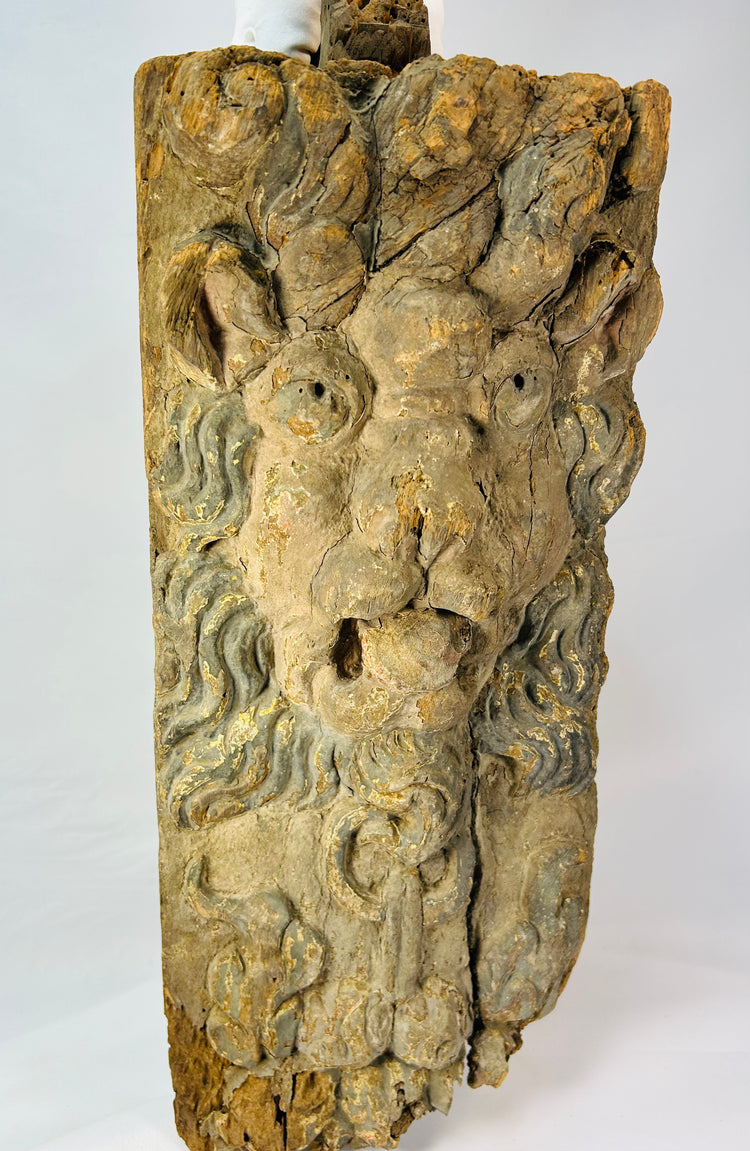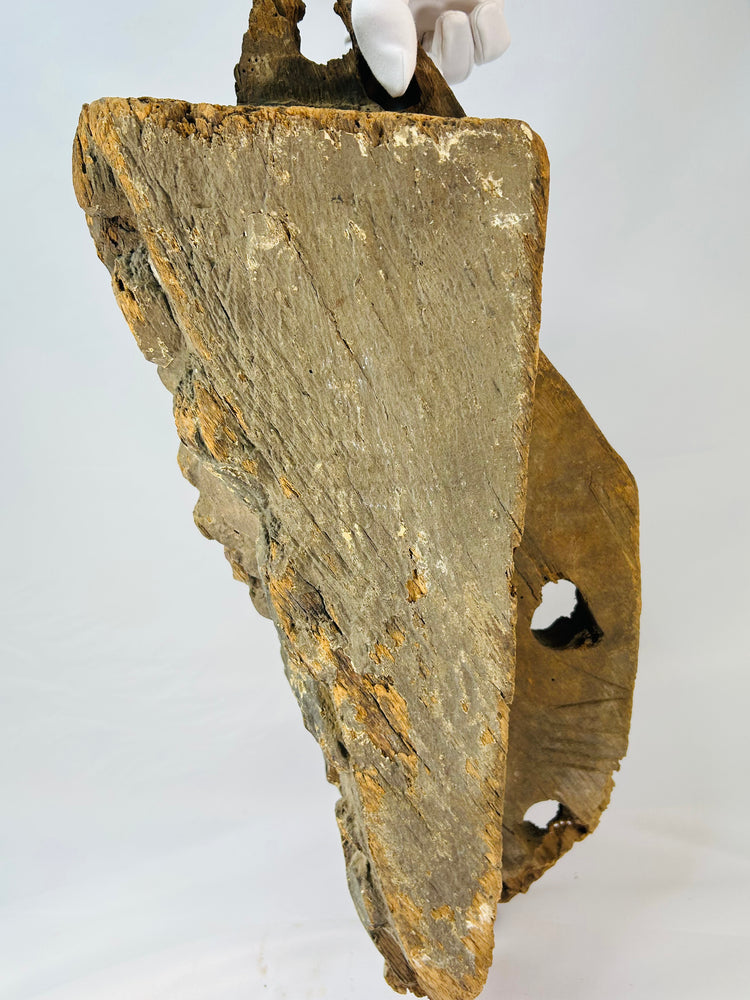Carved Lion Mascaron In Hardwood With Traces Of Gilding | Continental Europe | Circa 1650–1750
Description
More
Less
Historical Context & Origin
Region: Europe, likely Southern/Northern Continental (workshop unknown)
Material: Hand-carved hardwood (oak or similar) with traces of original gesso, polychrome, and parcel gilding
Period: Baroque, late 17th to early 18th century (circa 1650–1750)
Description
A powerful architectural lion mascaron carved in deep relief as a beam-end corbel, its mane rendered in swirling Baroque scrolls and its muzzle worked in bold, angular planes. Traces of original blue-grey paint and parcel gilding survive in recessed areas, testifying to its once richly polychromed surface.
The reverse retains its integral tenon/shoulder where the block was keyed into a timber, along with two old fixing holes through the side web—clear evidence of period architectural use. Monumental in scale and presence, the carving displays dramatically on a stand or wall.
Features
- Baroque lion mascaron corbel, carved as a structural beam end
- Single-block hardwood with centuries of patina and visible tool marks
- Surviving traces of gesso, paint, and gilding on mane and scrollwork
- Integral tenon and fixing holes indicating original architectural placement
- Strong decorative and sculptural presence for display
Cultural Significance
Lions were a popular apotropaic motif in European art and architecture from the Renaissance through the Baroque, symbolizing vigilance, strength, and civic authority. Carved corbels and mascarons like this adorned churches, guild halls, and palazzi, reinforcing both spiritual and civic ideals through architectural ornament.
Condition
Stable but weathered historical condition consistent with great age and architectural use. Losses to lower section and edges, age shrinkage cracks, inactive old insect channels, and surface abrasions throughout. Retains untouched patina and remnants of historic polychrome; structurally sound for display.
Dimensions (approximate)
Height: 21.5 in
Width: 7.5 in
Depth: 7.5 in
Age
Late 17th–early 18th century (circa 1650–1750)
Learn More
Explore the history and symbolism of lions in European art and heraldry: The Lions of Europe – Turpentine Creek Education
Browse more carved figures, statuary & architectural relics in our gallery: Statues, Figures & Ancient Carvings – Relic And Rarity
Description
Historical Context & Origin
Region: Europe, likely Southern/Northern Continental (workshop unknown)
Material: Hand-carved hardwood (oak or similar) with traces of original gesso, polychrome, and parcel gilding
Period: Baroque, late 17th to early 18th century (circa 1650–1750)
Description
A powerful architectural lion mascaron carved in deep relief as a beam-end corbel, its mane rendered in swirling Baroque scrolls and its muzzle worked in bold, angular planes. Traces of original blue-grey paint and parcel gilding survive in recessed areas, testifying to its once richly polychromed surface.
The reverse retains its integral tenon/shoulder where the block was keyed into a timber, along with two old fixing holes through the side web—clear evidence of period architectural use. Monumental in scale and presence, the carving displays dramatically on a stand or wall.
Features
- Baroque lion mascaron corbel, carved as a structural beam end
- Single-block hardwood with centuries of patina and visible tool marks
- Surviving traces of gesso, paint, and gilding on mane and scrollwork
- Integral tenon and fixing holes indicating original architectural placement
- Strong decorative and sculptural presence for display
Cultural Significance
Lions were a popular apotropaic motif in European art and architecture from the Renaissance through the Baroque, symbolizing vigilance, strength, and civic authority. Carved corbels and mascarons like this adorned churches, guild halls, and palazzi, reinforcing both spiritual and civic ideals through architectural ornament.
Condition
Stable but weathered historical condition consistent with great age and architectural use. Losses to lower section and edges, age shrinkage cracks, inactive old insect channels, and surface abrasions throughout. Retains untouched patina and remnants of historic polychrome; structurally sound for display.
Dimensions (approximate)
Height: 21.5 in
Width: 7.5 in
Depth: 7.5 in
Age
Late 17th–early 18th century (circa 1650–1750)
Learn More
Explore the history and symbolism of lions in European art and heraldry: The Lions of Europe – Turpentine Creek Education
Browse more carved figures, statuary & architectural relics in our gallery: Statues, Figures & Ancient Carvings – Relic And Rarity
You May Also Like
























